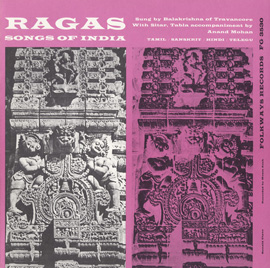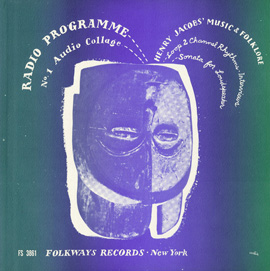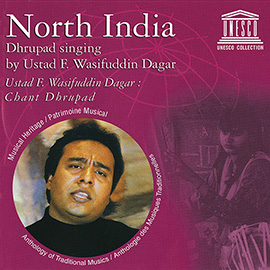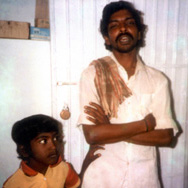Gateway Experiences in the Music of North India
Designed by: Kerri-Lynn Kenwell
University of Alberta, Canada
Download a PDF of this lesson plan
Summary
Students will be introduced to the music of India with a focus on introductory terminology, elemental concepts, and instrument identification through various singing, listening and playing opportunities.
Suggested Grade Levels: 3-5
Country: India (North)
Region: Asia
Culture Group: Hindustani (North India)
Genre: Art/Classical
Instruments: Voice, barred instruments, drums
Language: Hindi
Co-Curricular Areas: Social Studies (culture, geography, history)
National Standards: 1, 2, 3, 4, 5, 6, 7, 9
Prerequisites: None
Objectives:
- Listen for the tonal qualities of instruments in North India
- Play basic tabla rhythms
- Sing and play a raga (Sargam Solfege) and a drone
- Listen for the tala
- Improvise within a raga, on barred instruments.
Material:
- Projector/smart board
- Access to internet
- Stereo
- Drums
- Map of the world
- Barred instruments
- Lesson notes and Appendix A
- “Pahan Chunariya” Track #202
- Instrument identification - Track #102
- Sitar example: The World in My Mail Box
- Track #103 Raag Yaman
Lesson Segments:
- Identifying Instruments in North India (National Standards - 2, 5, 6, 7, 9)
- Experiencing the Raga (National Standards - 1, 2, 5, 6, 9)
- Finding the Tala (National Standards - 2, 5, 6, 9)
- Time to Improvise (National Standards - 2, 3, 4, 9)
1. Identifying Instruments in North India

“Pahan Chunariya”
from Ragas: Songs of India (1957) | FW03530
Attentive Listening:
- Play the following excerpt “Pahan Chunariya” for the students:
- Track #202
- Ask them to identify where in the world the music comes from. (India)
- What kind of musical sounds do you hear? (Tabla, tamboura (drone), voice) Students may give examples that are not specific instruments but instead instrument families - such as strings, woodwinds, skins (drums).
- How many musical sounds do you hear? (3)
- What sound do you hear first? (A drone.)
- What sounds comes in next? (A voice. The table enters last.)
- How does the music make you feel? What might it be about? (This is a song about Divali, which is a religious Hindu festival honoring the goddess of wealth. There is much feasting, gift-giving and lighting of lamps.) The translation of the lyrics for “Pahan Chunariya” are as follows:
- Divali with a black dress on is dancing with luminously flickering lamps; Gold, silver, and wealth are praised by all, but she is satisfied with love and affection even though one might be poor. Her heart is never empty, never empty! Divali is dancing. O myself, let me light a lamp, let me kindle love in the heart, the darkness of sorrows will be dispelled and will not remain dark, will not remain dark. Divali is dancing.
Integrating World Music:
- Using a map, ask the students to identify where on the map India is located.
- There are many kinds of instruments used in North India - See Appendix A for pictures of a few instruments commonly seen. Ask students if they are familiar with the names of classical instruments from India: take suggestions.
- Using the link below listen to the description of the tamboura, table, and sitar, which are commonly used in Indian music. Show pictures in Appendix A to accompany recording for lesson #1.
Attentive Listening: (Show Appendix A while discussing each instrument)
- How would you describe the sound of the tamboura? (Listen to the recording from lesson #1 again.) Note that the tamboura functions as a droneâ”a sustained or continuous note or chord played to accompany music that rarely changes in pitch. It provides a tonal center for the musician while they perform their piece. Each musician will play their music with a tonal center that is best suited to their singing range.
- What family of instruments would we place the tabla in? Listen again. (Percussion)
- What family of instruments would the sitar belong to? (Strings) Listen again to check answer.
- Do you hear the sound of the sitar in the first recording that we listened to? Listen again. (No)
Integrating World Music: The following information was retrieved from the liner notes of Nazir Ali Jairazbhoy’s Smithsonian Folkways Recordings release, catalog number FW08366.
Tabla
- The tabla is a two-piece drum that is commonly played in North India. The drum played with the right hand is known as the tabla and the drum played by the left hand is called the baya (“left”). Dowels are found under the strings of the outer rim of the tabla. A hammer is used to tighten the skin by tapping the dowels either up or down, thus changing the pitch of the drum.
- In a Google search, find a video example of a tabla player to show to the students as a demonstration of the instrument and the playing position.
Sitar
- The sitar is a plucked string instrument.
- The sitar has six or seven main strings and 19 “sympathetic” or resonating strings that sound without plucking them as a result of picking up the vibrations from main strings that are plucked.
- It is commonly carved out of teakwood and two dried gourds. There is one large and one small gourd attached at either end of the sitar. Their purpose is to amplify the sound.
- The sitar also has twenty movable frets so that the instrument can be retuned for each melodic form or raga by increasing or decreasing the spaces between the frets.
Tamboura
- The tamboura instrument has four strings but no frets.
- It is used strictly as an accompanying instrument to help the musician stay in tune.
- The tamboura produces a steady drone throughout a piece to offer a tonal center to the music.
Engaged Listening
- Play the following piece so that students can listen for the sound of the tabla. Ask them to pat the rhythm of the tabla (as notated below) when they hear it in the music. Track #202
- Ask students to identify if the pattern changes or stays the same. (Stays the same)
- What do we call this type of repeating musical pattern/rhythm? (Ostinato)
- Show the notation for the rhythm they are hearing on the board and practice saying it, then patting it out on laps.
- Distribute drums that are available in the classroom for playing the rhythm of the tabla, first without and then with the recording.
- Have the students listen to the tabla part again and ask them if the drum sounds are all the same or if they sound different. (They are slightly different in that beat. One is a bass tone).
- On the drums ask the children to play a bass tone on beat one and open tones on beats 2, 3, and 4.
- Play again with the recording.
Assessment:
Assess student ability to play the ostinato pattern of the tabla, demonstrating both bass and open tones on conga, djembe, dombek or other available drums.

2. Experiencing the Raga
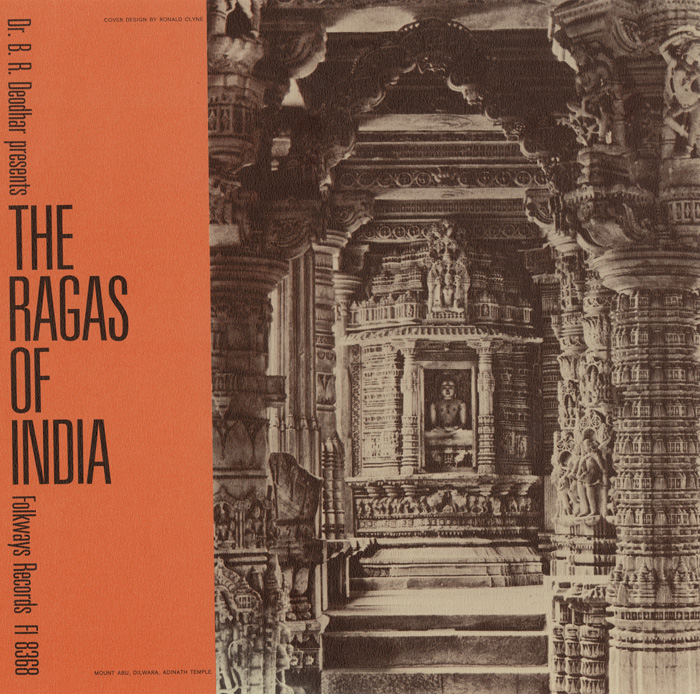
“Demostration of Instruments”
from Dr. B.R. Deodhar Presents the Ragas of Indias (1962) | FW08368
“Raag Yaman (Time Measure: Ektal)”
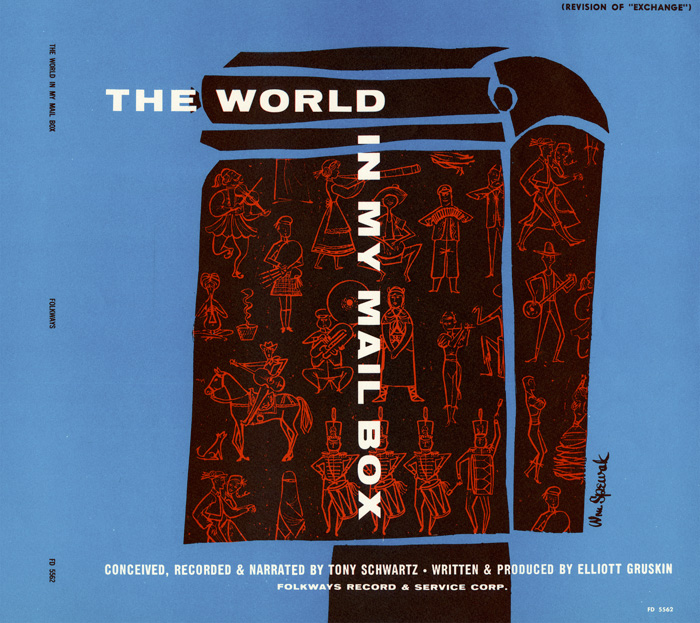
“Sitar from India”
from The World in My Mail Box (1958) | FW05562

“Comments on the Raga with Musical Illustration”
from Radio Programme, No. 1: Henry Jacobs' "Music and Folklore" (1955) | FW03861
Attentive Listening
- Using the following link, have the children listen to Track #103, “Raag Yaman.”
- Ask: Does this sound familiar? Where might we have heard something similar before? (It sounds like a familiar major scale)
Integrating World Music
Offer the following factual points as theoretical concepts of the raga.
- In classical music of North India, a melodic mode is called a raga and is based on a scale with very specific ascending and descending rules.
- A raga must have at least 5 notes and never omit the note “sa” (the Indian equivalent of “do” in “do-re-mi-fa-sol-la-ti-do”). It provides a framework for the melody and the pitches to be used.
- Derived from the Sanskrit word ranja, meaning "to please," a raga is an arrangement of notes, which is pleasing to the ear. (Info from B.R. Deodhar’s liner notes, Smithsonian Folkways catalog number FW08368.)
- Ragas can relay a specific mood, atmosphere, or emotion and each are played at a specific time of day or season of the year.
- There are over 150 different ragas in use. A typical professional musicians knows about 50.
- A musician will improvise a melody based on a raga in intricate ways.
Enactive Listening
- Invite students to sing a C Major scale, starting on C (doh) and ending on high C (high doh)
- Share with the students that in classical music of North India, the pitches of a scale or raga are sung as phonemes called Sargam (solfege). They are labeled with a different set of syllables than the more familiar “do-re-mi” solfege: sadaja (sa), rsabha (ra), gandhara (ga), madhyama (ma), pancama (pa), dhaivata (dha) and nisada (ni)
- Show the following chart as a reference.
|
Letter name |
C |
D |
E |
F |
G |
A |
B |
|
Western Name |
Do |
Re |
Mi |
Fa |
Sol |
La |
Ti |
|
Indian Name |
Sa |
Re |
Ga |
Ma |
Pa |
Dha |
Ni |

- Sing the raga using the Sargam syllables.
- Note that a raga will set a particular mood, emotion, or atmosphere in a piece of music. Invite the students to raise the pitch F to an F# and to sing a new-sounding scale. Ask: What did you notice?
- Play along on piano or other melodic instrument to help them more accurately sing the F#. Ask the students to explain how playing the F# in place of the F natural changes the mood of the scale.
- Listen to the following example to demonstrate the change in mood between two ragas. “Comments of the raga with Musical Illustration,” track #203 from Radio Programme No. 1: Henry Jacobs’ “Music and Folklore”
- Moving onto a barred instrument, replace the note F with an F# on only half of the instruments in the classroom. Students in group one will play the C Major scale, followed by group two playing the scale with the F# in order to hear each scale in succession and to identify the mood change.
- Split the class into two groups:
- Group one will play the C Major scale and group two will sing using western-styled “do-re-mi” solfege.
- Group two will play Raga Yaman (with F#) and group one will sing using Sargam syllables.
- Switch so that each group can experience playing and singing both parts.
Assessment: Assess students’ ability to sing fundamental pitches associated with a raga through accurate pitch matching.
3. Finding the Tala
Engaged Listening
- Instead of the music of North India being organized into measures, it is organized into long rhythmic cycles called talas. There are more than a100 different talas.
- Invite students to find out if the tala of Lesson #1 is grouped into beats of 2, 3, or 4. Listen to “Pahan Chunariya,” Track #202
- While listening, ask students to show the beat somewhere on their bodies (pat, tap, clap). Challenge them to figure out if the music is grouped into cycles of 2, 3, or 4 beats. (Cycles of 4)
- Show the tala for this piece by clapping on beat 1 and through finger-ticks by touching the thumb to each of your index, middle and ring fingers for beat 2, 3, and 4. Repeat this cycle, except on the third repetition wave the hand in place of the clap. This cycle is called “Tintal” (or “Three Claps”) and is the most common tala in the music of North India. It represents a sixteen beat measure divided up into four equal parts, as shown below:
| Clap (beat 1) 2, 3, 4 Clap (beat 5) 6, 7, 8 Wave (beat 9) 10, 11, 12 Clap (beat 13) 14, 15, 16 |
Assessment: Assess student ability to show the steady beat and the subdivisions of the tala through a series of handclaps, finger-ticks, and waves.
4. Time to Improvise
Integrating World Music
The art of the music of North India lies in the ability of the musician to improvise. Ragas, as mentioned before, are musical modes that form the basis of the melody that the musician will create a composition upon.
Remind the students of the experience of “Raga Yaman” in Lesson #2 (the scale based on the C Major Scale but with the F sharpened to F#). Prepare students to improvise a melody of sixteen beats in length, so as to incorporate the tala “Tintal” with the beats divided into four equal parts.
- Give students an opportunity to explore the art of improvisation on the barred instruments. Set up barred instruments with an F# for Raga Yaman.
- Have some students share their compositions with the class.
- Incorporate a drone effect by directing several students to play a tremolo technique on C in order to imitate the sound of the tamboura, while others play the tabla rhythm notated in Lesson #1.
- Combine all three instrument parts: improvisations in Raga Yaman, table, and drone.
Assessment:
Assess student ability to improvise utilizing pitches associated with Raga Yaman, on barred instruments and to play as part of an ensemble.
Extension Activities:
- Teach the Vikriti patterns as found in Ruckert, George, 2004. Music in North India (New York: Oxford University Press).
- Using the Internet, show videos/pictures of other Indian art forms, such as dance, visual arts, and architecture.
- Listen to other examples of Indian classical music to hear the following instruments:
Appendix A - Retrieved from the liner notes of Smithsonian Folkways Recordings album no. FW08366, Nazir Ali Fairazbhon - Classical Music of India, Introduction by Richard Waterman.

Note that the Vina is a sitar from Southern India.



